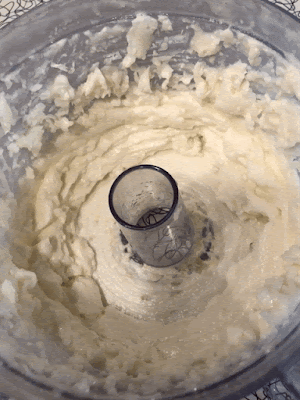I was digging around the back of the fridge and discovered a jar of lingonberry preserves. The reason I even have a jar of lingonberry preserves is due to the fact that the recipe below was my go to salmon recipe for quite awhile. It was adapted from a recipe I saw in Bon Appetit magazine. It is a festive (yet easy) dish that I have served for company on more than one occasion. In fact, some close friends we made this for created their alternative to this dish by using chipotle raspberry sauce in lieu of the lingonberry.
Upon finding the jar, I did a quick check to make sure I had the other ingredients on hand. I did so I decided to bring this back and serve it for dinner recently. It was like pulling out that record/CD that you used to listen to all the time but haven't for many years. I was surprised that I hadn't already posted it here.
You may or may not be able to find lingonberry preserves at your supermarket. It can be ordered via Amazon.
Lingonberry jam is a very popular condiment in the Scandanavian countries. Because of that, you may very find a jar at your local Ikea store.
A hearty side of roasted potatoes or a saute of leafy greens are two good choices for a side dish.
Mustard Roasted Salmon with Lingonberry Sauce
Ingredients:
- Dijon mustard - 1 Tbsp.
- Butter - 2 Tbsp (divided)
- Salmon fillets - 2
- Shallots - 1 medium, peeled and finely chopped
- Lingonberry preserves - 2 Tbsp.
- Raspberry vinegar - 2 Tbsp.
- Preheat oven to 450 degrees.
- In a small prep bowl, melt 1 Tbsp. butter and add mustard. Stir until well combined.
- Oil a Pyrex baking dish and place salmon fillets skin side down. Sprinkle lightly with salt.
- Spoon mustard/butter mixture over the top of the salmon and spread it out across the whole fillet.
Season generously with freshly cracked black pepper. Place in the oven for 15 minutes until mustard starts to brown (start monitoring at 11 or 12 minutes)--Fish may need a bit of browning under the broiler at the end (optional). - As salmon cooks, heat remaining tablespoon of butter in a smaller saucepan over medium heat. Add chopped shallots and saute for a few minutes until slightly softened.
- Add the lingonberry preserves and the raspberry vinegar and stir until mixture is smooth. Remove from heat.
- When the fish is cooked, remove from oven and let cool for a few minutes. Plate and spoon lingonberry sauce over the top and spread it across the entire fillet.






















